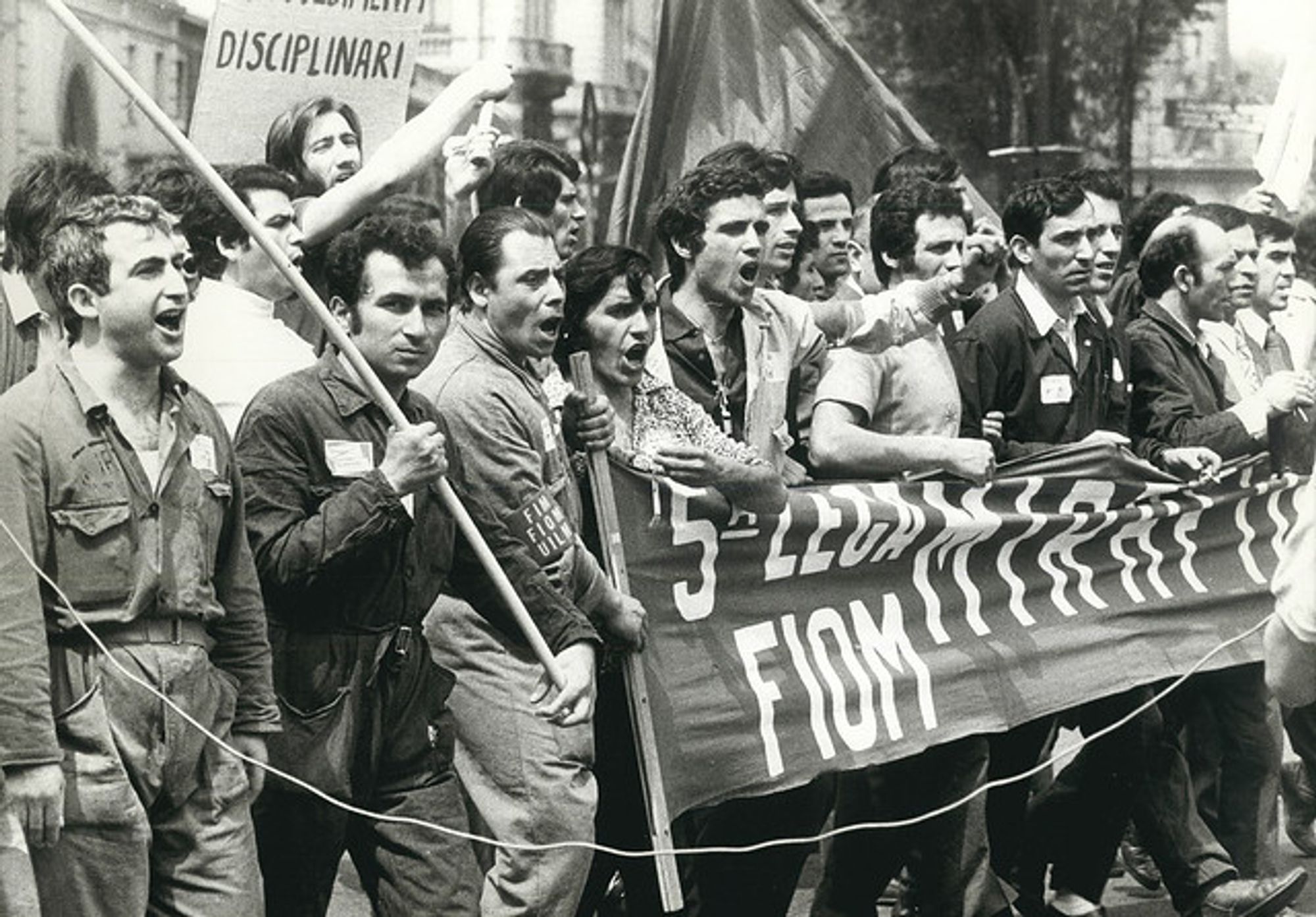The postwar period in Italy was a time of rapid industrialization in a country of deep and sometimes ancient traditions. It was a period of political dissensus with many parties, even those holding generally similar ideological positions, struggling for voice, support, and power. During the 1960s, unionized factory workers for Fiat lost confidence in the centralized model of their trade unions. They felt the union leaders were too narrowly focused and not properly addressing the full range of issues facing factory workers. Emerging from this potent milieu came a variety of decentralized, antiauthoritarian, and generally anticapitalist political and social movements identified as operaismo (workerism) and autonomism. The autonomous movement began, in part, as a result of the failure of communist and other leftist movements in Italy but later spread to Germany (the Autonomen movement) and France. Today, autonomism exists “as a global network of alliances between occupied social centers and media activists in Europe, Zapatistas and Piqueteros in Latin America, Black Blockers in North America, cyber hacktivists in Japan, and autonomous workers, unemployed youth, students, dispossessed peasants, and urban squatter movements in South Korea, South Africa, and India.”[i]



Autonomous social movements “involve people directly in decisions affecting their everyday lives. They seek to expand democracy and to help individuals break free of political structures and behavior patterns imposed from outside. … [T]hey seek to decolonize everyday life The concept of autonomy contrasts “the centralized decisions and hierarchical authority structures of modern institutions.” In Italy during the postwar period, the autonomous movement built solidarity among factory workers, university students, and activists in the feminist movement—all of whom were dissatisfied with the centralized politics and consumerist culture on offer. The people in these groups wanted “to live lives of their own collective making, not ones determined by decisions in corporate boardrooms and government ministries. As one observer put it: ‘More than a struggle for a new contract, this has been a rage against work.’”[ii]
Although there have been many political, theoretical, and practical variations within the overall autonomous movement, it nonetheless has “a number of principles that provide coherence: they [members of the movement] see their ideals as a revolutionary alternative to both authoritarian socialism (Soviet-style societies) and pseudodemocratic capitalism. … The Autonomen seek to change governments as well as everyday life, to overthrow capitalism and patriarchy.”[iii]

[i] Cuninghame, “Autonomism as a Global Social Movement,” 451.
[ii] Katsiaficas, The Subversion of Politics, 6, 26.
[iii] Katsiaficas, The Subversion of Politics, 8.
— —
see also: The Subversion of Politics: European Autonomous Social Movements And The Decolonization Of Everyday Life by George Katsiaficas (AK Press, 2006)
Anni di Piombo. The Lead Years, 1968–1972 (recto/verso, Aug 11, 2014)
👉 Home